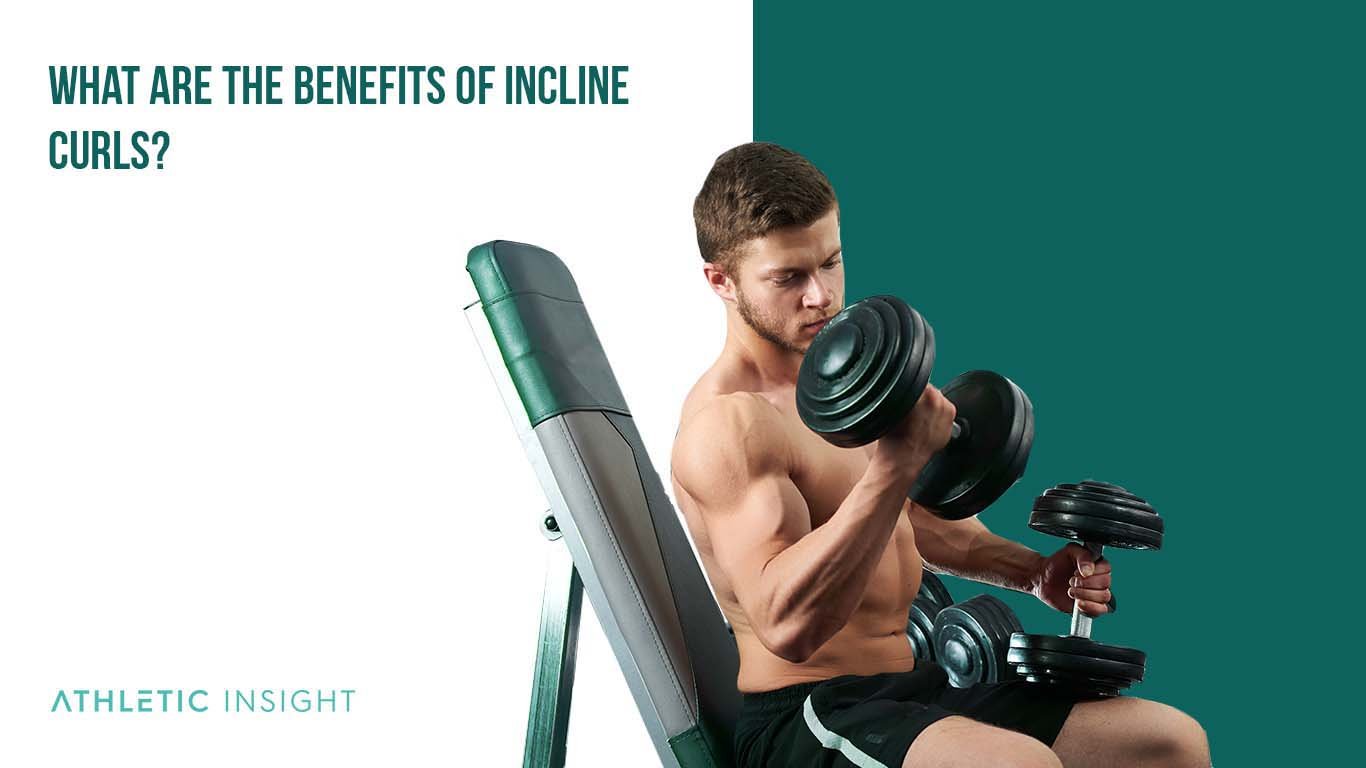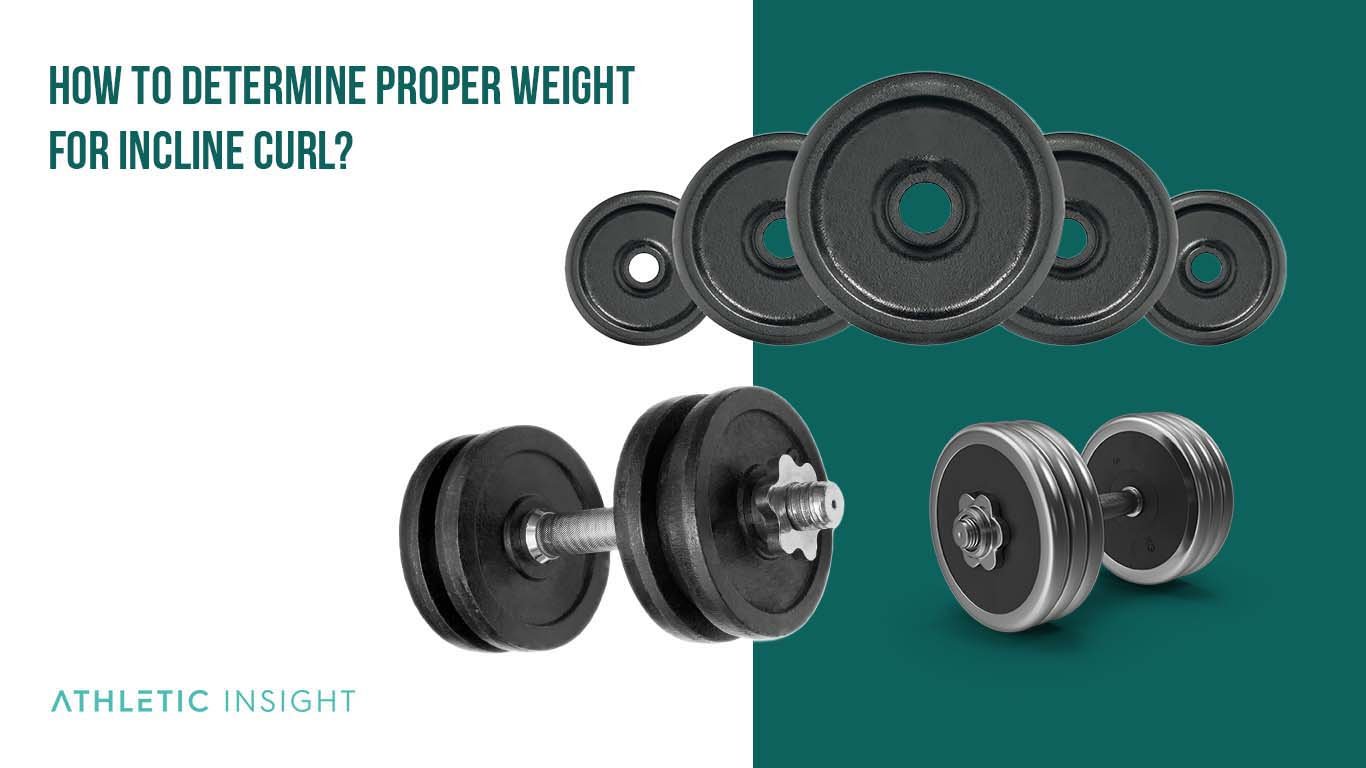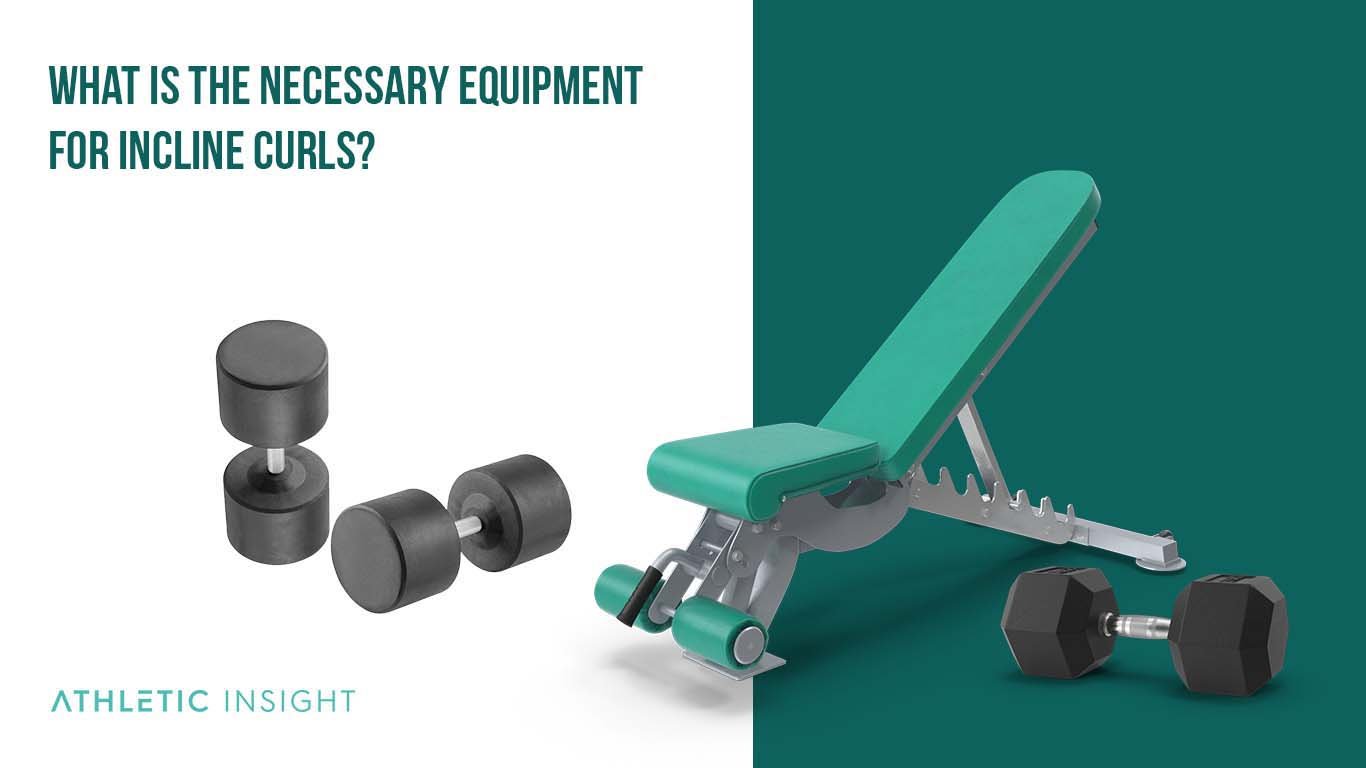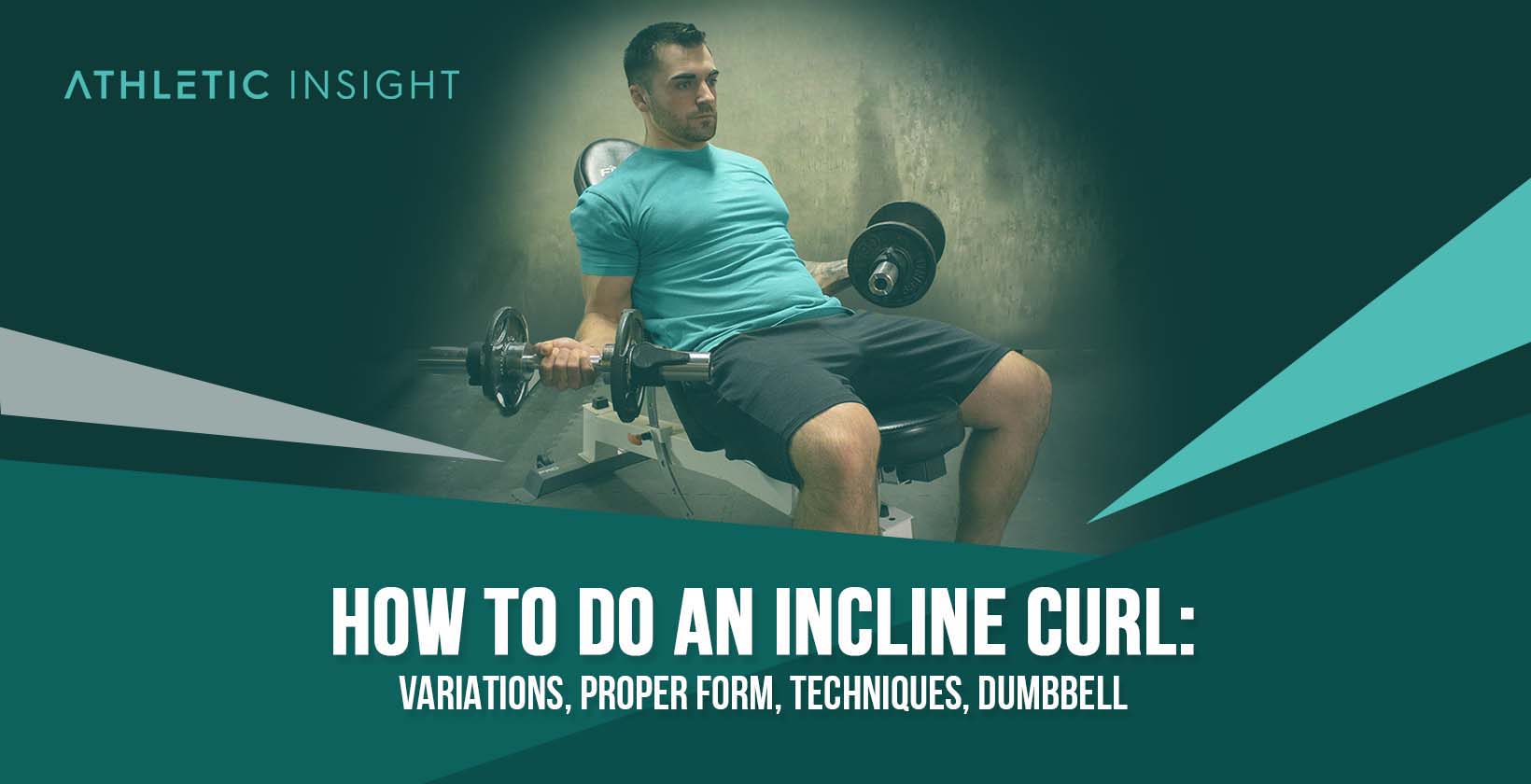An incline curl is a compound exercise that targets the biceps brachii (bicep) muscle. The incline curl is a variation of the traditional bicep curl that further isolates the biceps, allowing for greater development and improved strength to occur.
Incline curls isolate the biceps, so they’re an essential part of a well-rounded workout routine for the upper body. Since they allow you to stretch your arms all the way out behind you, incline curls are ideal for working the long head of the bicep.
Performing an incline curl requires a bench set to an incline to get started. You then sit on the bench with your back flat on the pad and let your arms hang straight down. At this angle, with your back tilted and your arms perpendicular to the floor, your elbows should be slightly behind your body. You have less leverage, and you can’t swing the weights the way you can with a barbell curl.
While the incline curl is meant for athletes looking to improve their physique, such as bodybuilders, all athletes will benefit from the movement as the biceps play a critical role in many other exercises.
Before attempting an incline curl, it is critical that the form is perfected or else it’ll lead to common injuries. These common injuries include joint pain and muscle tears. Still, once the form is perfect, the benefits of the incline curl far outweigh the negatives.
How to Perform Incline Curls with Proper Form
The Incline Curls are an effective workout and one of the best biceps exercises to include in a routine. To perform incline curls with proper form, you need to start with good posture and a solid platform. That means setting your feet on the floor while sitting on a standard incline bench. Make sure your back is flat on the backrest, and your sacrum presses into the backrest.
Your arms should hang straight toward the ground, and you should have a weight in each hand. Then start your curls focusing on getting a full bicep contraction, and make sure to control the eccentric phase.
Follow these steps to dominate incline curls.
- Choose a set of weights that is difficult but fully possible for your skill level.
- Set your bench to an incline of 45 to 60 degrees.
- Sit with your back against the bench, abs taut, and weights by your sides (one in each hand).
- Curl the dumbbells until they reach your shoulders, palms facing up.
- Maintain a complete contraction.
- Squeeze your biceps at the apex of the exercise.
- Lower the dumbbells slowly back to the starting position.
- Do three sets of fifteen reps.
What are the Benefits of Incline Curls?
Incline curls are an excellent exercise for isolating your bicep muscles and forcing them to work without help from the bigger muscles in your body. Since your arms are at an angle with your elbows slightly behind your torso, you get a great stretch and contraction.

These are the key benefits of incline curls.
- Working multiple muscles in your arm, particularly the bicep.
- Improves your overall grip strength.
- Stretches your bicep more than standard curls or hammer curls.
What are the Mistakes for Incline Curl Form?
Incline curl form mistakes can limit the effectiveness of incline curls. So, to maintain proper form,
Keep a few things in mind. First off, make sure your elbows stay behind your back the whole time. You’ll feel that this forces you to stretch your biceps to the maximum.
It would be best if you also work hard to keep your shoulders, back, and head on the bench at all times. Sitting forward decreases the isolation of your biceps and is sort of a cheat. The purpose of this exercise is to stretch the bicep, so make sure your arms are always straight at the bottom of each rep. You can queue yourself to flex your triceps at the bottom of each rep as a reminder to stretch your bicep to the maximum.
How to Determine Proper Weight for Incline Curl?
Since incline curls force you to get a big stretch in your biceps, you need to make sure that you don’t overload your muscles with too much weight. If you overdo it, you could injure yourself, so be cautious if you’ve never done incline curls before.

Start with a weight that you can easily curl fifteen or twenty times. Then, ramp up your weight in small increments until the last few reps are challenging. Then, you can either do your third set with the same weight a little more if you think you can still do at least eight reps.
For maximum growth and strength gains, look to do a set of 3-5 reps. If you do more reps, it emphasizes conditioning.
Which Muscles are Involved While Performing Incline Curls?
Incline curls work the same muscles as regular curls. But, they isolate the long head of the bicep brachii. Altering your grip changes which specific muscles receive the most emphasis. The muscles worked by incline curls include the long and short heads of the bicep brachii, the brachialis, and the brachioradialis.
What are the Incline Curl Variations?
Here are some variations of the incline curl.
- Underhand or supinated grip
- Twisting or supinating grip
- Hammer incline curls
- Offset grip with your hand closer to the inside of the dumbbell
What Is the Necessary Equipment for Incline Curls?
Incline curls require an incline bench or an adjustable bench with the back angle set to about 45-degrees. You can also vary the angle of the bench to increase or decrease the amount of stretching and leverage you have during the exercise. You’ll also need weights for each of your hands.

Dumbbells are a popular choice for best incline curling, but you can also use kettlebells, fitness bands, or even a cable machine.
What are the arm muscles exercised with Incline Curl?
The arm muscles exercised by incline curls include the long and short heads of the bicep brachii, as well as the muscles of the forearm.
What are the Incline Curl Related Facts?
Some facts related to incline curls aren’t that obvious, so here are a few things to know.
Does Incline Curl Affect the Hormones?
Some hormones in our body regulate the growth and repair of our muscles. Hard weight training can stimulate changes in the number of certain hormones, like testosterone, insulin, and human growth hormone (HGH).
These hormones are part of how we absorb and process protein, the main part of building muscle tissue. They also can help increase the number of anabolic hormones in our blood, which can promote protein synthesis and stimulate muscle growth.
Hard training can boost the levels of HGH released by the pituitary gland, which also can increase the amount of testosterone released within the body.
Is Incline Curl Practiced Within Crossfit?
Incline curls are a very specific exercise, and they’re not part of most Crossfit training programs.
Is Incline Curl a Military Movement?
Plenty of people in the military do incline curls to build the strength and size of their bicep muscles. But, incline curls are not part of the military’s workout regimen.
Is the Incline Curl Essential?
Incline curls target the bicep specifically. So, if you’re trying to build up your arm strength and size, they are essential for the best results. Skipping incline curls can leave you with a lack of variety in your upper body workouts.
Is Incline Curl a Compound Exercise?
The incline curl is not a compound exercise. Instead, it is an isolation exercise that only involves one joint, the elbow, and targets one specific muscle, the bicep. Technically, the bicep has two heads, and other muscles, like those of the forearm, are involved. But when done properly, the incline curl is not a compound move.
What Can Replace Incline Curls?
You can’t replace the effectiveness of the incline curl for targeting and isolating the biceps. But, you don’t have to always do it the same way. In fact, you should mix up your incline curl workouts with variations. Doing so can help avoid repetitive stress injuries and also help you get maximum results.



